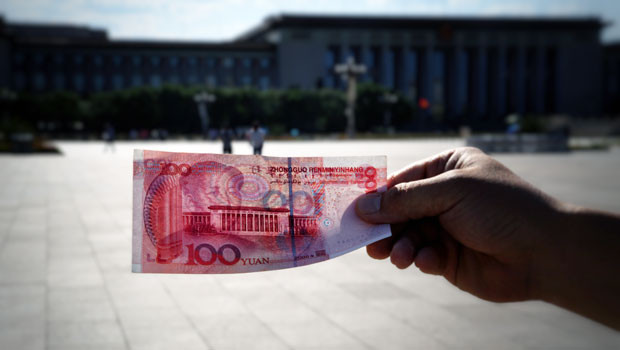Asia report: Most markets fall as China holds interest rates

Asia-Pacific markets registered a mixed performance on Thursday, as investors across the region mulled over new economic data.
Major indices demonstrated a slightly bearish trend, though exceptions were noted in Australia.
“Asian equity markets had a mixed trading session, reflecting the uncertain performance in the US markets as investors processed various data releases, corporate earnings results from tech darlings Netflix and Tesla,” said TickMill’s Patrick Munnelly.
“The Nikkei 225 was the worst performer, declining following weaker-than-expected trade data with a contraction in imports, although the trade balance returned to a surplus for the first time in almost two years.
“On the other hand, the Hang Seng rose, buoyed by early strength in the property sector after the People's Bank of China eased cross-border funding for firms and financial institutions.
“However, the Shanghai Composite was lacklustre despite the PBoC maintaining benchmark lending rates and issuing guidelines for the promotion of the private economy.”
Markets show mixed performance amid flurry of data
In Japan, the Nikkei 225 dropped 1.23% to end at 32,490.52, and the Topix Index followed suit, declining 0.79% to 2,260.90.
Major contributors to the decline on Tokyo’s benchmark included Advantest Corporation, which fell 4.18%, while Terumo Corporation slipped 3.01%, and Yaskawa Electric Corporation saw a dip of 2.9%.
Chinese markets also traded in the red, with the Shanghai Composite down 0.92% to 3,169.52, while the Shenzhen Component dropped 1.06% to 10,816.27.
Tech plays Foxconn Industrial Internet and Dawning Information Industry experienced notable dips of 7.33% and 5.71%, respectively.
Hong Kong's Hang Seng Index saw a marginal dip of 0.13% to close at 18,928.02.
Sunny Optical Tech suffered the most, plummeting by 13.65%, while China Resources Power declined by 2.07%.
The South Korean Kospi also witnessed a drop, albeit a minor one of 0.31%, to settle at 2,600.23.
Amongst its stocks, Hanwha Ocean and Amorepacific saw downturns, with their shares falling by 4.62% and 3.59%, respectively.
In contrast to the general trend in the region, Australia's S&P/ASX 200 managed a slight gain of 0.02% to close at 7,325.00.
Neuren Pharmaceuticals and Stanmore Resources outperformed others, registering growths of 6.31% and 5.81%, respectively.
Meanwhile, New Zealand's S&P/NZX 50 ended the day slightly lower, down by 0.1% to 11,932.10.
Pacific Edge and Mainfreight experienced declines, with their shares falling by 4.39% and 1.86%, respectively.
On the currencies front, the dollar was last down 0.14% against the yen at JPY 139.45, while it fell marginally against the Aussie by 0.01% to AUD 1.4646.
The greenback also lost ground against the Kiwi, slipping 0.36% to change hands at NZD 1.5909.
In oil markets, Brent crude and West Texas Intermediate futures both saw a slight uptick, with the former last up 0.21% on ICE at $79.63 per barrel, while the NYMEX quote for West Texas Intermediate increased 0.28% to $75.56.
China keeps interest rates steady, Japan posts unexpected trade surplus
In economic news, despite recent economic fluctuations the People’s China announced that it would keep its one-year and five-year loan prime rates unchanged at 3.55% and 4.2% respectively.
The move followed the country's decision to keep its medium-term facility loan rates steady at 2.65%.
It also came in the wake of China's GDP growth for the second quarter, which fell short of economists' projections.
The year-on-year growth stood at 6.3%, lower than the anticipated 7.3%, according to data released on Monday.
Elsewhere, Japan reported an unexpected trade surplus of JPY 43.05bn in June - a significant turnaround from the deficits seen in previous months.
It marked the first instance of a trade surplus in 23 months for the world's third-largest economy.
In contrast, May saw a deficit of JPY 1.38trn, and in June last year it recorded a shortfall of JPY 1.37trn.
The swing to surplus territory was put down to a sharp decrease in imports, which dropped 12.9% year-on-year, whereas exports experienced a modest uptick of 1.5% compared to the same time last year.
Meanwhile, Australia's labour market remained stable in fresh data, with the seasonally-adjusted unemployment rate staying put at 3.5% in June.
The figure was slightly below the 3.6% that economists had anticipated, according to Reuters polling.
As reported by the Australian Bureau of Statistics, the employment-to-population ratio was static at 64.5%, and total unemployment saw a minor decrease of 1,600, settling at 505,500.
Reporting by Josh White for Sharecast.com.